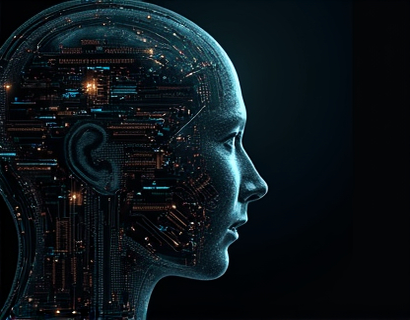AI-Powered Knowledge Interface: Enhancing Industry Insights and Safe Learning
The advent of AI-powered knowledge interfaces has revolutionized the way we access and interact with specialized information. These platforms leverage advanced algorithms and machine learning to provide users with accurate, relevant, and timely insights into various domains, including people services and industry trends. One of the most significant advantages of these AI chat platforms is their ability to ensure a safe and verified experience for all users, particularly children and students. This article delves into the features and benefits of such innovative AI chat interfaces, focusing on content accuracy, user safety, and educational value.
Content Verification and Accuracy
In an era where misinformation can spread rapidly, the importance of content verification cannot be overstated. An AI-powered knowledge interface prioritizes the accuracy of the information it provides by employing rigorous verification processes. This involves cross-referencing data from multiple trusted sources, fact-checking algorithms, and continuous updates to ensure the information remains current and reliable. For users seeking insights into people services and industry trends, this means accessing high-quality, trustworthy content that can inform their decisions and enhance their knowledge.
The verification process is not limited to the initial content creation. These platforms also implement real-time monitoring to detect and correct any inaccuracies or outdated information. This dynamic approach ensures that users always receive the most up-to-date and accurate data, which is crucial for making informed decisions in both personal and professional contexts.
User Safety and Protection
Ensuring a safe learning environment is a top priority for AI-powered knowledge interfaces, especially when catering to children and students. These platforms adhere to strict safety protocols and guidelines to protect users from exposure to inappropriate content or interactions. One key feature is the implementation of age-appropriate content filters that tailor the information to the user's age group. For instance, content intended for children will be simplified and vetted to remove any potentially harmful or complex information.
Additionally, these platforms employ robust privacy measures to safeguard user data. This includes compliance with regulations such as the Children's Online Privacy Protection Act (COPPA) and the General Data Protection Regulation (GDPR). Users can rest assured that their personal information is handled with the utmost care and security, providing peace of mind for both parents and educators.
Enhanced Educational Value
The educational value of AI-powered knowledge interfaces is profound. These platforms serve as valuable tools for students, educators, and lifelong learners. By providing specialized insights into various subjects, they complement traditional learning methods and offer a more interactive and engaging educational experience. For example, a student studying economics can ask the AI about current market trends, historical data, and theoretical concepts, receiving comprehensive and well-structured responses.
Moreover, these platforms can adapt to the learning pace and style of individual users. Through natural language processing, the AI can understand the user's queries and provide explanations in a manner that best suits their understanding. This personalized approach not only enhances learning but also fosters a deeper engagement with the material.
Interactive and User-Friendly Interface
The design of AI-powered knowledge interfaces is centered around user experience. These platforms are built to be intuitive and easy to navigate, ensuring that users of all technical backgrounds can access and utilize the information effectively. The interface is typically text-based, allowing for quick and efficient interactions. Users can type their questions or topics of interest, and the AI responds with relevant information in a clear and concise manner.
To further enhance usability, these platforms often include features such as context memory, which allows the AI to remember previous interactions and provide more relevant and personalized responses in subsequent conversations. This continuity helps users build on their knowledge and explore related topics more deeply.
Support for Diverse User Needs
One of the strengths of AI-powered knowledge interfaces is their ability to cater to a diverse range of user needs. Whether a user is a business professional seeking industry insights, a student researching a academic topic, or an individual looking for general knowledge, these platforms can provide tailored information. The AI's versatility ensures that users receive content that is not only accurate but also relevant to their specific interests and requirements.
For instance, a business leader can ask the AI about emerging trends in their industry, competitive analysis, and strategic recommendations. The AI can compile data from various sources, analyze it, and present a comprehensive overview that helps the user make informed decisions. Similarly, a student can explore complex subjects like physics or literature, receiving explanations and examples that enhance their understanding.
Promoting Safe and Ethical Use
In addition to providing accurate and relevant information, AI-powered knowledge interfaces are designed to promote safe and ethical use. This includes implementing measures to prevent the spread of harmful content, such as hate speech, misinformation, and inappropriate material. The AI is programmed to recognize and filter out such content, ensuring that users are exposed only to positive and constructive information.
Furthermore, these platforms often include educational components that teach users about digital citizenship and responsible online behavior. By integrating lessons on privacy, security, and ethical use of information, these platforms help users develop the skills needed to navigate the digital world safely and responsibly.
Integration with Educational Institutions
The integration of AI-powered knowledge interfaces with educational institutions is another significant benefit. Schools and universities can leverage these platforms to supplement their curricula and provide students with additional resources for research and learning. Teachers can use the AI to create customized lesson plans, assign interactive tasks, and monitor student progress in real-time.
For example, a history teacher can use the AI to generate discussion prompts based on current events, helping students connect historical contexts with contemporary issues. This not only enriches the learning experience but also encourages critical thinking and analytical skills.
Continuous Improvement and Innovation
The field of AI is rapidly evolving, and knowledge interfaces are no exception. These platforms are constantly updated and improved based on user feedback, technological advancements, and emerging research. This commitment to continuous improvement ensures that the information provided remains cutting-edge and relevant. Users can expect regular updates that enhance the accuracy, depth, and breadth of the content available.
Moreover, the development of new features and functionalities is an ongoing process. For instance, the integration of multimedia elements such as videos, infographics, and interactive simulations can make the learning experience more engaging and effective. These enhancements cater to different learning styles and preferences, making the platform accessible to a wider audience.
Conclusion
AI-powered knowledge interfaces represent a significant advancement in the way we access and interact with specialized information. By prioritizing content accuracy, user safety, and educational value, these platforms offer a reliable and enriching experience for users of all ages. Whether for personal learning, professional development, or educational purposes, these AI chat interfaces provide a safe and verified environment that fosters growth and discovery. As technology continues to evolve, the potential for these platforms to transform learning and industry insights is immense, making them an invaluable resource for the future.











































